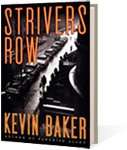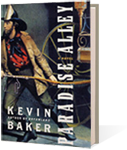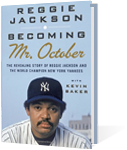By Kevin Baker
John Lewis knew that something was wrong the moment he led the Freedom Riders into the Montgomery bus station. The terminal was nearly deserted—save for a pack of reporters, and a few figures loitering in the shadows. Any police were conspicuously absent.
“It doesn’t look right,” he told one of the other Riders.
That was nearly all he had time to say before he was charged by a dozen white men armed with bats, bottles, and lengths of pipe. A mob soon followed, led by a woman yelling “Get those niggers!”
Even the reporters were brutally beaten to the ground. John Seigenthaler, a Nashville newspaper editor working as a special observer for Robert Kennedy and the Justice Department, was clubbed unconscious when he tried to push one of the Riders into a cab.
Yet nothing compared to the brutality visited upon the young men and women, black and white, trying to test whether the law of the land applied to Alabama. Lewis, a seminary student and future Georgia congressman, was knocked unconscious. Jim Zwerg, a white exchange student from Wisconsin, was held down while his teeth were methodically knocked out with his own suitcase. William Barbee was slugged to the ground and stomped a few feet away from where his classmate Lewis lay.
Nor was this sort of treatment unusual. In a scene out of The Road Warrior, a previous bus had been run down by fifty cars outside of Anniston, Alabama, and firebombed, as its passengers barely escaped with their lives. At nearly the same time in Anniston, white thugs swarmed aboard still another Freedom Rider bus and beat all aboard mercilessly, including a retired professor who sustained permanent brain damage.
Nor did the terror end there. The demonstrators who escaped the buses were often arrested and imprisoned. Others were denied sanctuary and even first aid at local hospitals. When some sheltered in Montgomery’s “Brick-a-Day” church, a massive white mob nearly succeeded in storming and burning the house of worship—with Martin Luther King, Jr., and dozens of other civil rights leaders inside.
The time was the spring and the summer of 1961, and it was not the first or the last time civil rights demonstrators put their bodies on the line. That had started in 1955, when Rosa Parks refused to give up her seat on a bus to a white person. There were countless other heroes, great and low, in the face of relentless, massive terror. There was King, and Fannie Lou Hamer, and Robert Moses, the stubborn, soft-spoken New Yorker, who sustained his voting rights campaigns for four years in Alabama and Mississippi against incredible obstacles—once even making his bed in an office white racists had firebombed that afternoon.
The first, white-hot summer of the movement was heralded on February 1, 1961, when four students at all-black North Carolina A&T, in Greensboro, staged a sit-in at a Woolworth’s counter. The idea spread like wildfire, and in Nashville, a group of idealistic, religious, determined individuals, led by James Lawson, James Bevel, Diane Nash, and Lewis, led a months—long protest that brought down the city’s public segregation laws.
The Nashville protestors were the backbone of the tiny, new Student Nonviolent Coordinating Committee (SNCC), and with James Farmer’s Congress of Racial Equality (CORE) they decided to make a living test of whether the Supreme Court’s repeated decisions against segregated federal facilities—including interstate bus facilities—were worth the paper they were written on in the Deep South.
Busload after busload of students—and their elders—put themselves on the line. They endured beatings, prison, humiliation—and drew first the support of the more established civil rights organizations, then the Kennedy administration, and finally much of the public. They were the first, mass, youth-led revolt of the 1960s, and the finest.
They were stubborn. Lewis’ beating in Alabama was his second of the trip; he had already been slugged and kicked to the ground for trying to enter a white restroom in Virginia. Another carload of demonstrators was intercepted in Alabama, driven out of the state by notorious Sheriff Bull Connor himself—and returned the next day.
They won their bus stations—some of the first ground claimed for a new, desegregated America. The movement still had much to endure, but the children had already led the way. As Jim Zwerg told reporters from his hospital bed:
“We will continue our journey one way or another. We are prepared to die.”
American Greats Edited by Robert A. Wilson & Stanley Marcus
Public Affairs Press, a member of the Perseus Group









